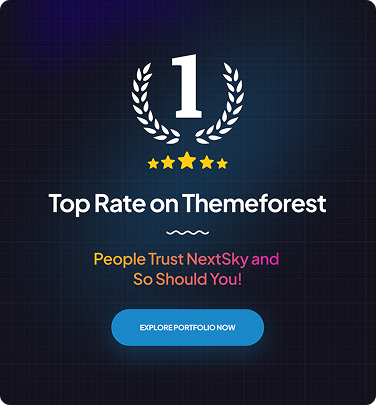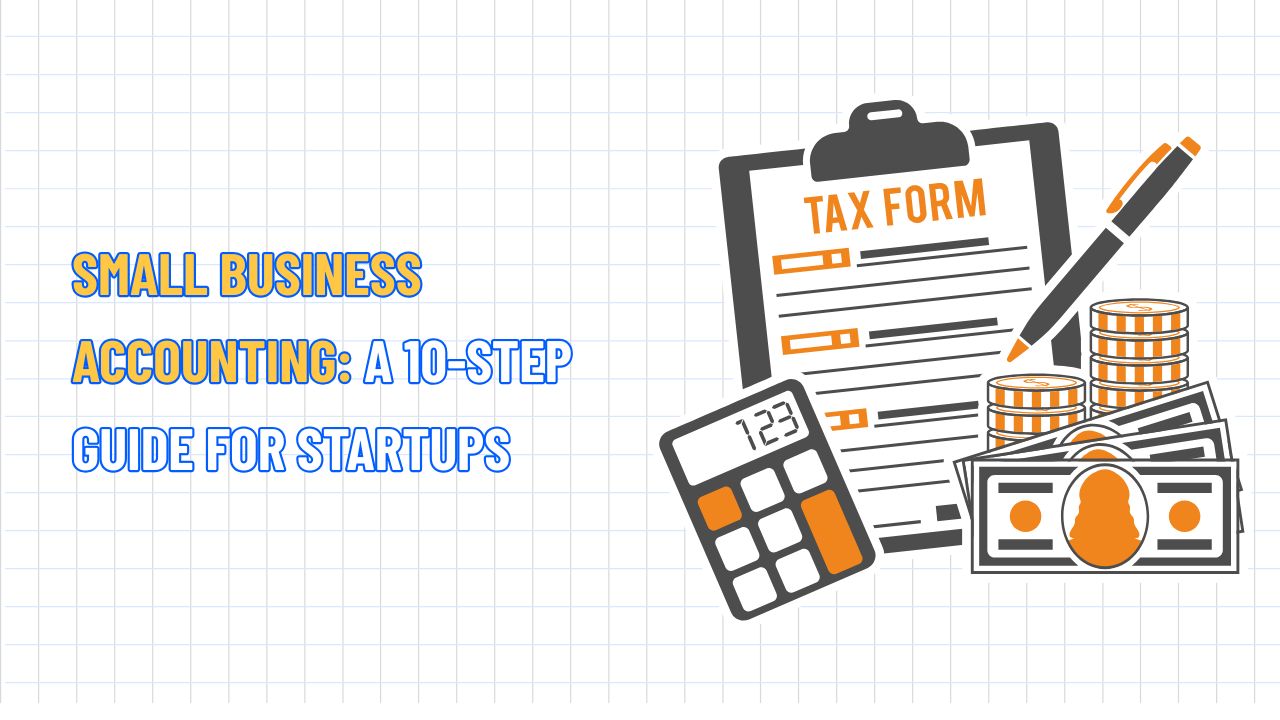Collaboration Ideas to Boost Small Business Sales in 12 Steps
Table of Contents Hide
Strategic partnerships are among the most effective ways to elevate your brand and boost sales. In this article, NextSky will guide you through collaboration ideas to boost small business sales, complete with real-world examples to help you build sustainable partnerships that propel your business forward.
Why small business collaborations matter
Partnering with other businesses whether local or online, opens doors to new customers, cuts costs, and enhances the customer experience. Unlike large corporations, small businesses can leverage authenticity and agility to form intimate partnerships that create significant impact. Strategic business collaborations deliver:
- Expanded customer bases by tapping into trusted partners' audiences.
- Cost savings through shared resources like advertising, space, or supplies.
- Boosted brand credibility by associating with reputable businesses.
- Innovation through combined expertise to create unique products or services. Below, we'll explore 12 practical collaboration ideas beyond the basics, offering fresh perspectives and specific steps to help you grow.
12 collaboration ideas to boost small business sales
1. Co-host community events to maximize visibility
Partnering with local businesses effectively infuses energy into your brand, spreads value, and connects authentically with customers. Joint events can create a vibrant atmosphere while opening natural, emotional promotion opportunities. For example, a bookstore and coffee shop could collaborate for a "Literary Coffee Tasting" event, blending flavors and knowledge.

How to implement:
- Find businesses with complementary services, like a gym and a nutritionist.
- Promote the event via social media, email newsletters, and community bulletin boards.
- Use tools like Eventbrite or Mailchimp for registrations and tracking.
- Offer exclusive perks for attendees to encourage immediate purchases.
Read more: What is A Small Business? A Comprehensive Guide to Definition
2. Launch cross-promotions
Cross-promotions are one of the simplest yet most effective ways to expand your customer base and amplify your brand. By teaming up with businesses that share your audience, you can deliver mutually beneficial deals like discounts, gifts, or loyalty points to excite buyers into exploring both brands.
How to implement:
- Partner with a non-direct competitor that targets the same audience (e.g., a bakery and florist for wedding-related promos).
- Create clear, trackable offers using QR codes or unique discount codes.
- Promote via Instagram, TikTok, or email campaigns to maximize reach.
- Use Shopify Collabs to streamline cross-promos if you're in e-commerce.
Example: A pet store and dog grooming service in Seattle partnered to offer 10% off grooming with a pet store purchase, and vice versa. Within one month, both saw a 15% increase in repeat customers, highlighting the power of this collaborative strategy.
3. Share retail space or pop-ups
Sharing business space is a smart strategy to reduce fixed costs and expose your brand to new customer groups. A pop-up shop or shared retail space can become a lively destination that delivers unique, inspiring shopping experiences.

How to implement:
- Seek complementary businesses with similar customer bases.
- Agree on clear terms for space usage, costs, and schedules.
- Use a shared calendar like Google Workspace for bookings.
- Promote the collaboration on social media with behind-the-scenes content.
Example: In Austin, a fashion boutique invited a local jeweler to set up a pop-up table. The jeweler's unique designs drew new customers, boosting the boutique's sales by 12% over three months.
Read more: Small Business SEO Guide to Help You Grow Your Presence
4. Create collaborative product bundles
Combine your products with a partner's to form exclusive bundles that deliver standout value. This strategy works well for both e-commerce and traditional retail businesses.
How to implement:
- Choose partners with complementary products (e.g., a coffee roaster and ceramic mug maker).
- Design bundles for special occasions like holidays or seasonal events.
- Use Canva to create eye-catching promo visuals.
- Track sales and customer feedback to refine future bundles.
Example: A candle maker partnered with a local artist for hand-painted, limited-edition candle jars sold as exclusive gift sets. The bundles sold out in two weeks and significantly grew Instagram followers.
5. Develop joint marketing campaigns
Pooling marketing resources with a business that shares your audience is a savvy way to expand reach, split costs, and create resonant value. Collaborative campaigns—like social media ads, co-branded videos, or local PR, can transform two standalone brands into a powerful, unified voice.

How to implement:
- Brainstorm campaigns that appeal to both audiences (e.g., a "Back to School" drive for a stationery store and tutoring service).
- Use Trello to organize tasks and deadlines.
- Track engagement metrics with tools like Google Analytics or Shopify Analytics.
- Share ad budgets to maximize ROI.
In Chicago, a fitness studio and healthy meal prep service launched a "Summer Wellness Challenge" campaign with Instagram Reels featuring dynamic workouts and healthy recipe tips. It boosted social engagement by 25% for both brands.
6. Curate themed gift guides
Gift guides are a creative marketing format that positions your products alongside synergistic brands in an engaging, practical context. Themed collections from holidays and birthdays to personal hobbies inspire fresh shopping ideas and allow brands to reach customers naturally and subtly.
How to implement:
- Partner with businesses that match your style or target audience.
- Use Canva to design visually appealing guides.
- Distribute via email newsletters, social media, and your website.
- Include trackable links to measure clicks and conversions.
Example: A group of five U.S. antique shops created a "Vintage Holiday Gift Guide." Shared on blogs and social media drove a 30% increase in online traffic.
Read more: Small Business Marketing Guide with Effective Tips
7. Run collaborative giveaways
Giveaways are a clever tactic to spark excitement, boost engagement, and attract new customers without significant spending. When two businesses co-host, the prize value doubles, reach expands, and brand visibility amplifies.

How to implement:
- Select prizes that appeal to both audiences (e.g., a fitness tracker and gym membership).
- Keep entry requirements simple, like following both accounts and tagging friends.
- Use tools like Gleam or Rafflecopter to manage entries.
- Promote across all channels for maximum exposure.
Example: A spa and artisanal chocolate maker co-hosted an Instagram giveaway themed "Self-Care Sunday," with a relaxing massage and a premium chocolate box as the prize. It garnered over 2,000 entries and grew both brands' followers by 10% in days.
8. Partner with micro-influencers
Micro-influencers (1,000–10,000 followers) offer high engagement rates, affordable costs, and natural authenticity compared to celebrities. This approach can outperform pricey big-influencer campaigns. Pairing with businesses offering complementary products lets brands extend their reach and spread messages organically.
How to implement effectively:
- Find influencers whose followers align with your customer base.
- Propose joint campaigns where both brands showcase products or services.
- Use Shopify Collabs to simplify management and relationship-building.
- Track results with unique discount codes or links for precise conversion measurement.
Real-world example: A skincare brand and fitness coach collaborated with a local micro-influencer for an Instagram "Self-Care Sundays" series. The campaign increased website traffic by 15% for both brands while building a positive, relatable, and trustworthy image.
Read more: 7 Steps to Building Social Media for Small Businesses
9. Share knowledge and expertise
Collaboration isn't just about joint sales, it's about exchanging expertise, value, and mutual growth. Innovation opportunities and lasting relationships naturally emerge when businesses openly share knowledge.

How to implement effectively:
- Host workshops or webinars with complementary experts, like photographers and graphic designers.
- Use Zoom or Google Meet for online access.
- Share valuable resources like design templates, guides, or checklists to add attendee value.
- Follow up to nurture leads post-event.
Real-world example: A web design firm and content marketing agency co-hosted a free webinar on "Building a Successful Online Presence." It led to multiple service sign-ups, boosting leads by 20% quickly.
10. Negotiate bulk buying for discounts
Linking with businesses sharing supply needs is a smart way to negotiate better rates, cut operating costs, and strengthen supplier ties. Bulk group purchases free up resources to invest in product and service quality.
How to implement effectively:
- Identify businesses with similar needs, like cafes and bakeries or vegan restaurants.
- Approach suppliers as a linked group for preferential terms.
- Use Google Sheets or shared tools to track orders and split costs transparently.
- Review agreements periodically for fairness and long-term viability.
Real-world example: In an Austin neighborhood, three local restaurants pooled organic food orders, securing a 20% supplier discount. The savings upgraded ingredients and menus without raising customer prices.
11. Create a joint newsletter
A co-branded newsletter is a smart way to expand lead lists and share creative resources between vision-aligned businesses. Beyond product promotion, it becomes an emotional bridge, delivering authentic value that resonates with readers from both sides.
How to implement effectively:
- Partner with a non-direct competitor sharing your audience.
- Use Mailchimp or Constant Contact for design, sending, and performance tracking.
- One side handles content, the other visuals or offers, saving time while maintaining quality.
For example, a pet store and dog trainer launched a "Pet Parents" newsletter blending practical training tips and product suggestions. It created a companionship for pet owners, doubling open rates and boosting loyal customer sales.
12. Leverage Shopify Collective for e-commerce partnerships
For e-commerce businesses, platforms like Shopify Collective make it easy to sell complementary products from other Shopify stores. This lets you diversify your catalog without holding inventory.
How to implement:
- Explore Shopify Collective to find U.S. brands with add-on products.
- Curate items that fit your brand's style.
- Promote partnerships on your site and social media.
- Use Shopify analytics to track sales and optimize your lineup.
Example: A home decor store partnered with a Shopify candle brand for curated gift sets. The collaboration raised average order value by 18%.
Tools to simplify your collaborations
Tools to streamline every partnership. A sustainable partnership relies on trust, efficiency, and seamless coordination. To optimize collaboration, use these modern tools for effortless connection, management, and creation:
- Shopify Collabs: A bridge for businesses to partner with other Shopify stores, expanding customer bases and enabling flexible cross-promotion campaigns with influencers.
- Mailchimp: Turn joint ideas into professional co-branded newsletters, automate email sends, and track real-time campaign performance.
- Trello: A visual project management solution to arrange tasks, monitor progress, and keep everyone aligned toward shared goals.
- Canva: Craft branded communications—from promo images and giveaways to collaborative event designs.
- Google Workspace: A comprehensive collaborative workspace for sharing and updating documents, schedules, and plans in real-time, ensuring timely information access.
Small business collaborations build community, share resources, and create memorable customer experiences. Applying these ideas can boost sales, reach new audiences, and strengthen your brand presence. Start small with one partnership, track results, and let creativity lead to bigger opportunities.










